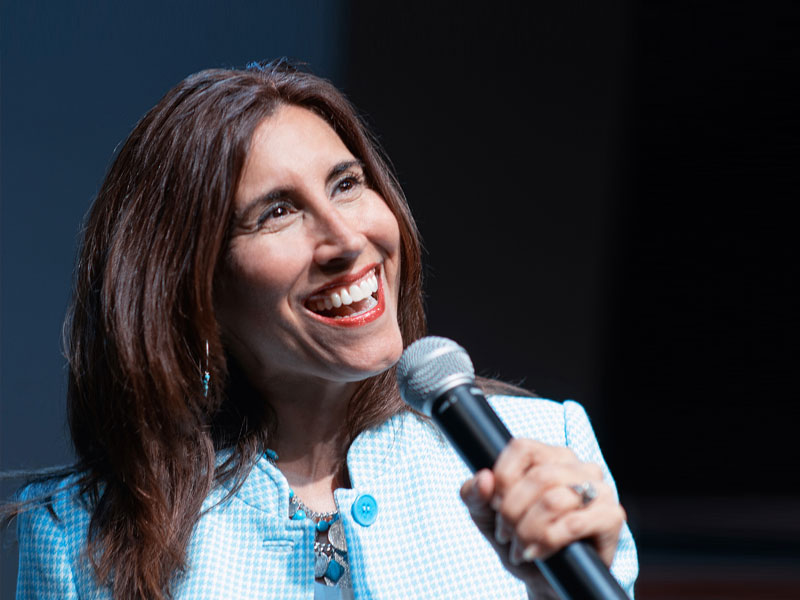Pressure. Stress. Burnout. All are by-products of work for today’s professionals. Many are frazzled by too many meetings, distractions, and interruptions, causing increasing demands on time.
As a result, work-life balance is a popular topic. It can be the solution to our stress and exhaustion, but only if we’re clear on exactly what it means. The term is defined in different ways by different people. To some, it is being able to deal with personal tasks and issues during the workday. Remote work has given many workers the ability to do this. Others feel that work-life balance means devoting equal time to work and to a personal life. There are flaws in both of these definitions.
Leaders who wish to help their teams achieve work-life balance need to provide a clear definition. Both employers and their staff need to adopt a corporate policy that is mutually beneficial to the company’s goals and productivity, and to the employees’ well-being. Once this is established, the company can use this explicit meaning to create guidelines that help team members understand how they can best balance their roles and responsibilities within the organization with their personal responsibilities and appropriate downtime. The guidelines can also serve in attracting talented new workers to the organization, as well as be instrumental in retaining high performers.
Factors Important to Knowledge Work
An overlooked factor in knowledge work is that it depends on brain function, so for high quality, our brains need to be functioning well. For this to happen, our physical and emotional health must be a priority. It’s not possible to be objective about circumstances when we are sleep deprived, sedentary, don’t take time to step away and gain new perspectives. This applies to work and life in general. Time away from work is necessary to recharge and re-energize, become more relaxed, attend to physical health, and refresh creativity. Activities such as exercise, enjoying hobbies, traveling, and spending time with family and friends are crucial to mental and emotional well-being, and facilitate a different and creative perspective on work upon return to it.
What Work-Life Balance Isn’t
Although working from home may make it more practical for people to manage their personal lives, that is distinctly different from achieving work-life balance. In fact, studies show that remote workers often work more hours, which, of course, takes time away from leisure activities. In addition, working from home often increases the frequency of meetings, the challenges of “always on” expectations, and the presence of constant distractions. So, while remote work can offer the freedom to handle some personal tasks and household chores out of the sight of colleagues, it should not be assumed to offer better balance.
“Balance” also doesn’t mean allotting equal time to everything, as some might define it (often workaholics, who need a useful definition more than most). If you enjoy your work and get satisfaction from it, an “equal time” definition of work-life balance isn’t relevant or useful.
Alternative Terms So Far Are Also Unhelpful
The terms “work-life integration” and “work-life blending” may sound more appealing than “work-life balance.” However, when I think of these alternate phrases, I often picture parents checking email from the soccer field, or stepping away from an activity with family to take “a minute” for an “important phone call.” “Integration” and “blending” seem to me more like work intruding into all aspects of our personal time than the other way around.
Recommended Definition of Work-Life Balance
My definition of work-life balance has been helpful to my clients and their teams, and may help with decisions about remote and hybrid work environments. It’s is very simple: Don’t work too much.
Studies show that working more than 45 hours per week can be detrimental to both our physical and mental health. A Stanford study showed that productivity per hour declines at about 50 hours per week, and working more than 55 hours per week is futile. Another study by time management author Laura Vandercam indicated that the happiest employees work around 38 hours per week.
Nurturing Creativity
Knowledge work requires us to combine inputs, such as ideas, analysis, and data, into unique and coherent outputs. So it makes sense that more diverse inputs result in more creative and unique outputs. This means that the more we do things outside of work, such as traveling, reading, indulging in hobbies and new experiences, the more we can increase our level of creativity.
It’s important to realize that sometimes the best thing we can do for our work is to not work, and instead allow time to enjoy other activities. The definition of work-life balance that I propose — working 38-45 hours per week — allows us to better promote our physical and emotional well-being, as well as helping to foster our creativity.
Promoting Behaviors to Create Better Work-Life Balance
Rather than the “work-hard, play hard” mantra embraced by many organizations these days, instead consider a definition of work-life balance as “not working too much,” and adopting this as a company value. A guideline of 38-45 hours of work per week on average presents an alternative to the “always on” environment. It can also help to address the the problem of global teams working different hours. This does not negate the fact that sometimes long hours are necessary. But these “crunch times” need to be followed by times of lighter schedules and demands. Otherwise, employee burnout becomes a problem.
When defined this way, work-life balance can be not only the solution to the negative consequences of work, but it can also provide the key to unlocking creativity and innovation, and giving you and your organization a competitive advantage
Maura Nevel Thomas is an award-winning international speaker and trainer on individual and corporate productivity and work-life balance, and the most widely-cited authority on attention management. Her proprietary Empowered Productivity™ System has been embraced by the likes of NASA, L’Oreal, and Dell. She is a TEDx Speaker, founder of Regain Your Time, author of six books, and was named a Top Leadership Speaker in Inc. Magazine. Maura is frequently featured in major business outlets including Business Insider, Fast Company, and Washington Post, and she’s also a regular contributor to both Forbes and the Harvard Business Review, with articles there viewed over a million times. Follow her on Twitter @mnthomas.


